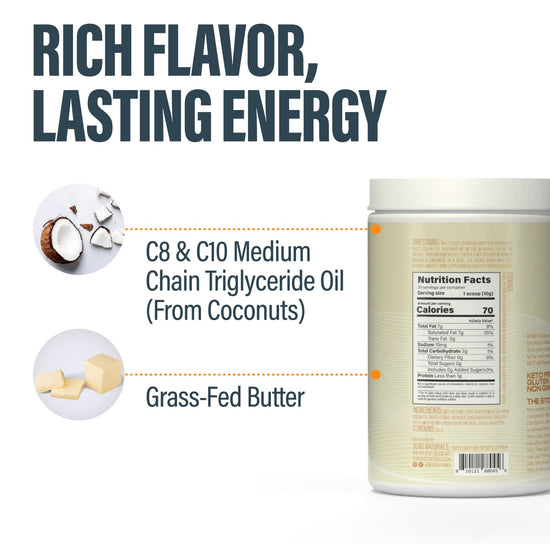Table of Contents
- Understanding Coffee Creamer Types
- The Two-Hour Rule: Why It Matters
- What Happens When Creamer Goes Bad?
- Tips for Proper Storage
- Conclusion
Picture this: you stumble out of bed, bleary-eyed, and head straight for the coffee pot. After brewing that first magical cup, you pour in your favorite coffee creamer, only to get sidetracked by the morning hustle. An hour later, you remember that your creamer has been sitting out on the counter. Panic sets in—does coffee creamer go bad if left out?
For many coffee enthusiasts, this scenario is not just a mere inconvenience; it raises genuine concerns about food safety and quality. With a multitude of different creamers available on the market—ranging from ultra-pasteurized dairy options to shelf-stable non-dairy varieties—understanding how long you can safely leave your coffee creamer out is essential.
In this blog, we'll delve into the lifespan of various types of coffee creamers, what factors affect their longevity, and how to ensure that your morning routine remains both delicious and safe. By the end of this post, you'll have a comprehensive understanding of the best practices for storing coffee creamers, the signs of spoilage to watch out for, and tips for extending their freshness.
Let’s embark on this journey to discover the ins and outs of coffee creamer storage, ensuring that every cup of coffee you enjoy is as delightful as it should be.
Understanding Coffee Creamer Types
Before we tackle the question of whether coffee creamer goes bad if left out, it's crucial to understand the different types of creamers available. This knowledge will help us determine how long each type can safely be left at room temperature.
Dairy-Based Creamers
Dairy-based creamers, such as half-and-half or heavy cream, are derived from cow's milk. These creamers are generally rich and creamy, adding a luscious texture to your coffee. However, they are also prone to spoilage due to their perishable nature.
Shelf Life
- Unopened: Unopened dairy creamers can last until the expiration date printed on the packaging when stored in the refrigerator.
- Opened: Once opened, dairy creamers should ideally be consumed within 7 to 10 days and should not be left out for more than two hours at room temperature.
Non-Dairy Creamers
Non-dairy creamers can either be liquid or powdered. They are made from various plant-based ingredients, such as soy, almond, or coconut. Some brands also contain preservatives that help prolong their shelf life.
Shelf Life
- Unopened: Shelf-stable non-dairy creamers can often last several months past their printed date when stored properly at room temperature.
- Opened: Once opened, these creamers should be refrigerated and consumed within 7 to 14 days. Similar to dairy creamers, they should not be left out for more than two hours.
Powdered Creamers
Powdered creamers, which are typically made from dehydrated milk or plant-based ingredients, boast a longer shelf life due to their low moisture content. They are an excellent option for those who enjoy coffee occasionally or for serving guests.
Shelf Life
- Unopened: Powdered creamers can last up to 24 months when stored in a cool, dry place.
- Opened: Once opened, as long as they remain dry and sealed tightly, they can still last for several months.
The Two-Hour Rule: Why It Matters
The U.S. Department of Agriculture (USDA) recommends that perishable items, including opened coffee creamers, should not be left out at room temperature for more than two hours. This timeframe is critical because once creamers reach temperatures between 40°F and 140°F, they enter the "danger zone" where bacteria can multiply rapidly, posing health risks.
Factors Influencing Spoilage
Several factors can affect how quickly coffee creamers spoil when left out, including:
- Temperature: The warmer the environment, the quicker the spoilage. Higher ambient temperatures (above 90°F) reduce the safe time limit to just one hour.
- Ingredients: Creamers with preservatives may have a longer shelf life than those without. Always check the ingredient list for additional insights.
- Packaging: Airtight seals and sterilized packaging can extend the shelf life of creamers. Once opened, exposure to air increases the risk of bacterial contamination.
What Happens When Creamer Goes Bad?
Just like any perishable product, coffee creamers can indeed go bad. Recognizing the signs of spoilage is vital for avoiding unpleasant surprises.
Signs of Spoilage
- Off Odor: A sour or off smell is a clear indicator that the creamer has spoiled.
- Curdling: If the creamer has become lumpy or curdled, it is no longer safe to consume.
- Altered Texture: A watery or overly thick texture can signal that the creamer has gone bad.
- Taste: If the creamer tastes off or sour, it's best to discard it.
Risks of Consuming Spoiled Creamer
Consuming spoiled coffee creamer can lead to foodborne illnesses, which may present symptoms like stomach discomfort, nausea, vomiting, or diarrhea. It is always better to err on the side of caution and discard any creamer that shows signs of spoilage.
Tips for Proper Storage
To keep your coffee creamer fresh for as long as possible, proper storage practices are essential. Here are some best practices for maintaining the quality of your creamers:
Refrigeration
- Always store opened dairy creamers and perishable non-dairy creamers in the refrigerator immediately after use.
- Ensure the creamer is sealed tightly to minimize exposure to air and bacteria.
Room Temperature Storage
- Unopened non-dairy creamers can be kept at room temperature until opened. However, once opened, they should be refrigerated.
- Powdered creamers can be stored at room temperature, but they should be kept in a cool, dry place, away from moisture.
Freezing Creamers
- If you have excess creamers that you won't use in time, consider freezing them. For liquid creamers, pour into ice cube trays or airtight containers, allowing you to thaw only what you need.
- Keep in mind that freezing may alter the texture of dairy-based creamers, so it's best suited for non-dairy options.
Conclusion
Understanding the shelf life and proper storage of coffee creamers is essential for any coffee lover. From knowing how long different types of creamers can be left out to recognizing the signs of spoilage, this knowledge can help ensure your morning cup remains delightful and safe.
Whether you prefer dairy, non-dairy, or powdered creamers, following best practices for storage will allow you to enjoy your coffee without worry. Remember the two-hour rule, regularly check for signs of spoilage, and store your creamers properly to make each cup a treat.
FAQ
1. Can I use coffee creamer that has been left out overnight? Generally, it is not safe to consume coffee creamer that has been left out for more than two hours. If it has been left out overnight, it's best to discard it.
2. How can I tell if powdered creamer has gone bad? Check for clumps, discoloration, or an off smell. If it looks or smells different from when you opened it, it's safer to discard it.
3. Is it safe to consume expired coffee creamer? While some creamers may be safe to use shortly after their expiration date, it is important to check for signs of spoilage. If in doubt, it's best to err on the side of caution and discard it.
4. What should I do if I accidentally left my coffee creamer out for too long? If your coffee creamer has been left out for more than two hours, it's advisable to discard it to avoid potential foodborne illness.
5. Can I freeze coffee creamer for later use? Yes, freezing coffee creamer is an option, especially for non-dairy creamers. Just remember that thawed dairy creamers may have a different texture and should be shaken before use.
Written by:

Butter MCT Oil Creamer
BUBS Butter MCT Oil Creamer (formerly Halo Creamer): Scientifically-Backed Brain and Body Fuel
BUBS Butter MCT Oil Creamer is your go-to for clean, fast-acting energy and focus, no crash included. It blends creamy grass-fed butter with fast-acting MCT oil powder (C8 and C10) to kickstart your day and keep you sharp. The MCTs go straight to work, giving your brain a quick boost while the grass-fed butter supports digestion and gut health.
Together, they help curb cravings, keep you feeling full longer, and support steady energy throughout the day—perfect for fueling your mornings or powering through the afternoon slump.
Starts at $36.00
Shop

